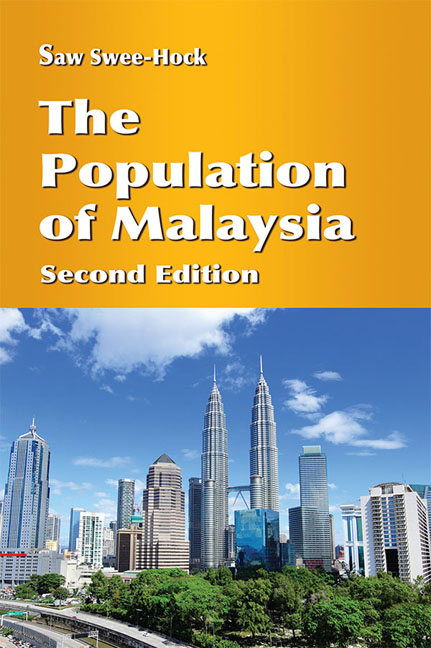Book contents
- Frontmatter
- Contents
- List of Tables
- List of Figures
- Foreword
- Preface
- 1 Introduction
- 2 External Migration
- 3 Internal Migration
- 4 Ethnic and Religious Patterns
- 5 Population Growth and Distribution
- 6 Population Structure
- 7 Nuptiality Trends and Patterns
- 8 Fertility Trends and Differentials
- 9 Mortality Trends and Differentials
- 10 Labour Force
- 11 Future Population Trends
- Bibliography
- Index
- Frontmatter
- Contents
- List of Tables
- List of Figures
- Foreword
- Preface
- 1 Introduction
- 2 External Migration
- 3 Internal Migration
- 4 Ethnic and Religious Patterns
- 5 Population Growth and Distribution
- 6 Population Structure
- 7 Nuptiality Trends and Patterns
- 8 Fertility Trends and Differentials
- 9 Mortality Trends and Differentials
- 10 Labour Force
- 11 Future Population Trends
- Bibliography
- Index
Summary
The movement of people within Malaysia has assumed greater significance as a result of the official concern about the unbalanced distribution of the population among the various parts of the country. This concern was explicitly expressed in the development plans adopted from the early 1970s onwards, and specific strategies were spelled out to, among other things, redistribute the population. The plans seek to distribute the population to sparsely settled rural areas with agricultural potential, to spread out the urban population more evenly throughout the country, and to rearrange the population with the view of attaining greater economic balance among the major communities. The underlying purpose of the last strategy as stated in the Third Malaysia Plan was to free the Bumiputera from their despondence on subsistence agriculture and to allow them to participate in the “modern rural and urban sectors of the economy at all levels”. In fact, the Second Malaysia Plan has spelled out the overall aim of the population policies was meant to achieve “economic balance between urban and rural areas and to eliminate the identification of race with vocation as well as location”.
Internal migration may be defined as a change of residence from one community or geographical unit to another within the national boundaries. The movement of people within the country can be examined in terms of the following categories:
1. Migration among the thirteen states, known as inter-state migration.
2. Migration among the various districts within a particular state. This is known as intra-state migration at the district level.
3. Migration among different urban and rural areas. This can be classified into urban-urban, urban-rural, rural-urban, and rural-rural.
An urban area is defined as a conurbation with 10,000 or more inhabitants. The rural-urban type of movement is more commonly known as urbanization. Each state is sub-divided into smaller units known as districts, with different number of districts in each of the thirteen states. In view of the national aim of achieving a more balanced socio-economic development among the various ethnic groups and among the various regions of the country, the population censuses have always collected statistics that can enable us to study internal migration.
- Type
- Chapter
- Information
- The Population of Malaysia , pp. 43 - 60Publisher: ISEAS–Yusof Ishak InstitutePrint publication year: 2015



